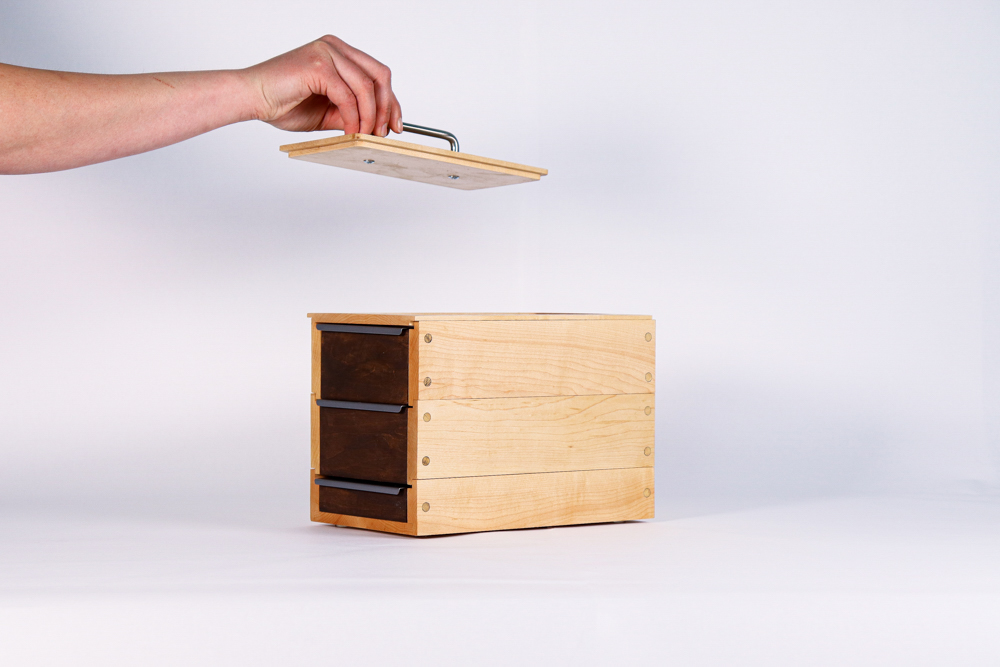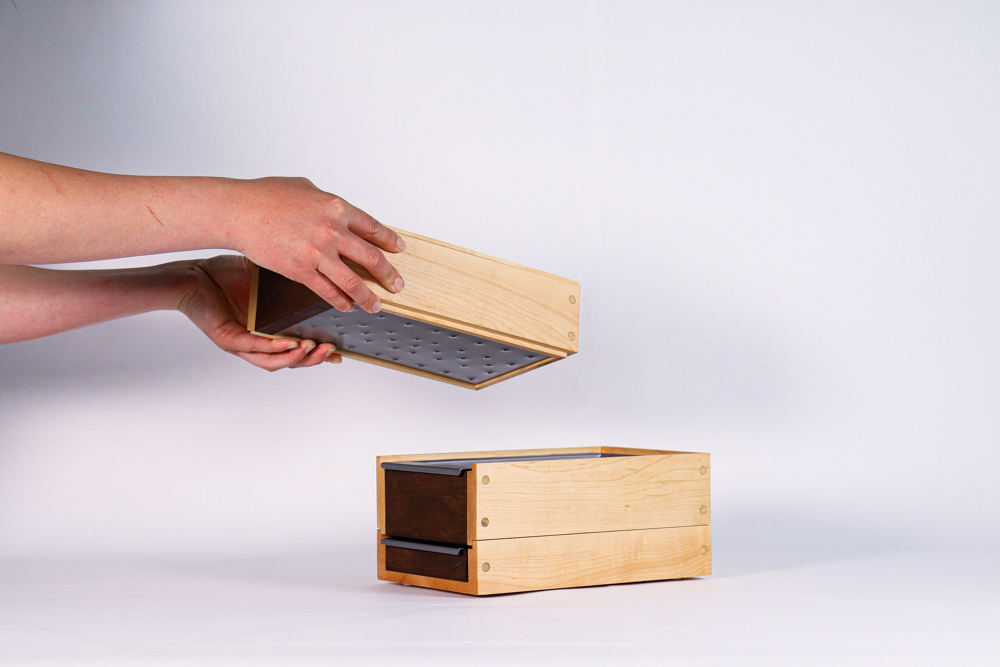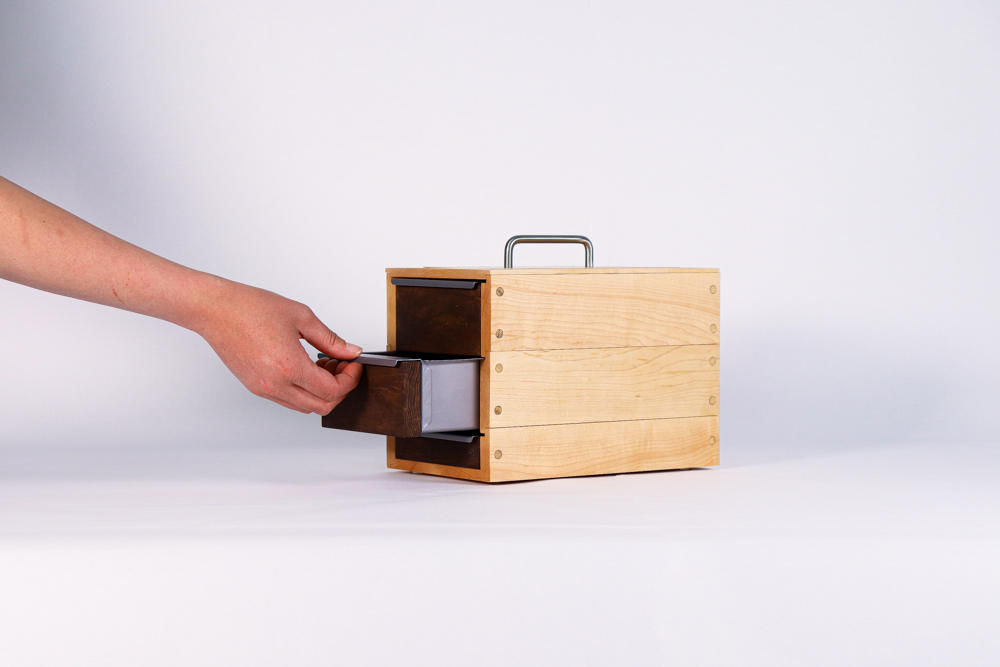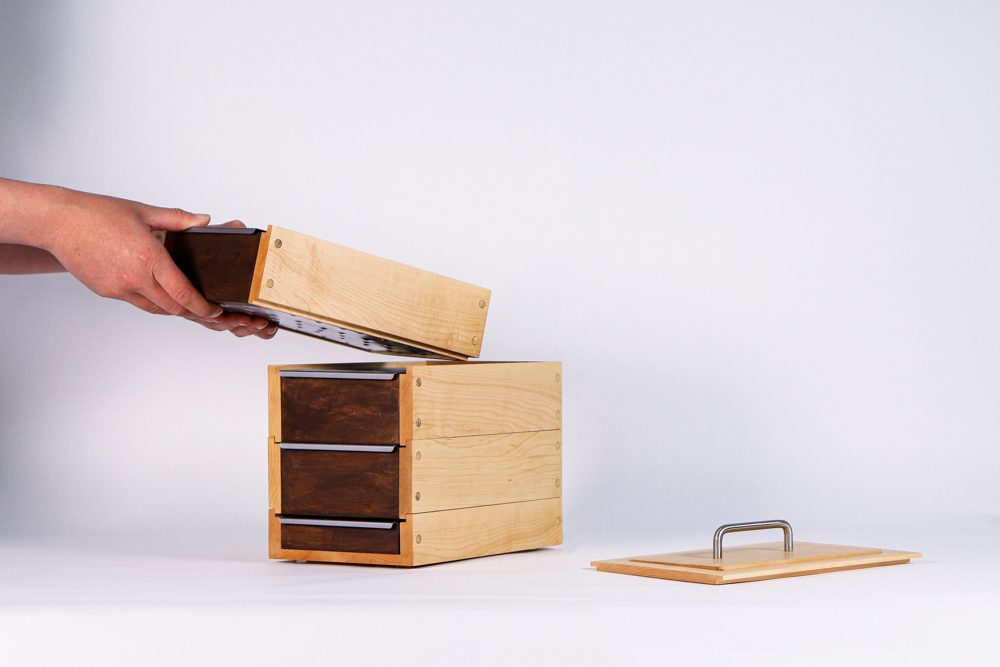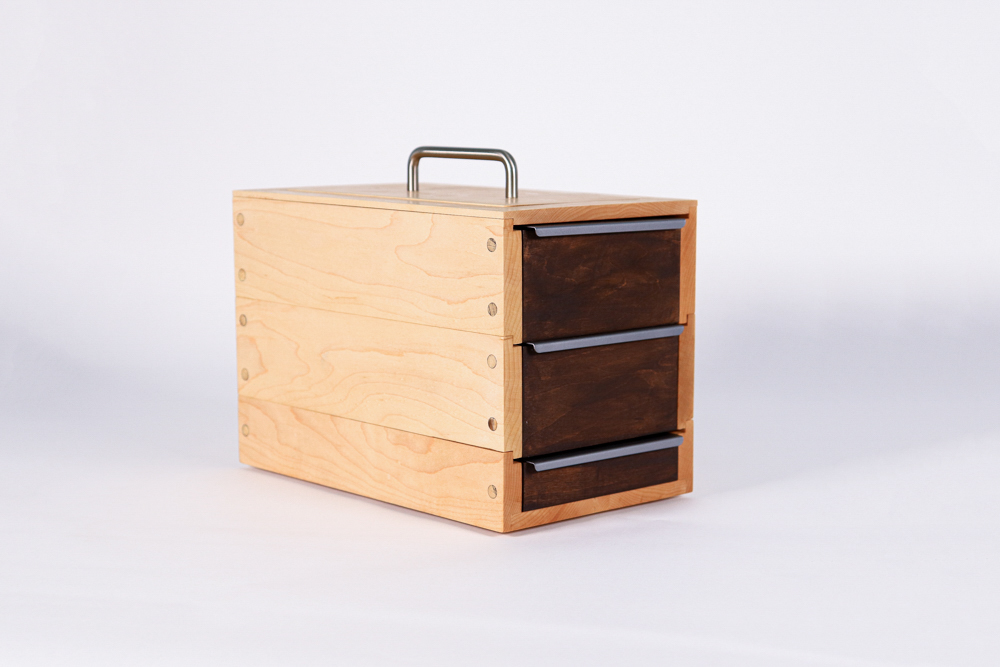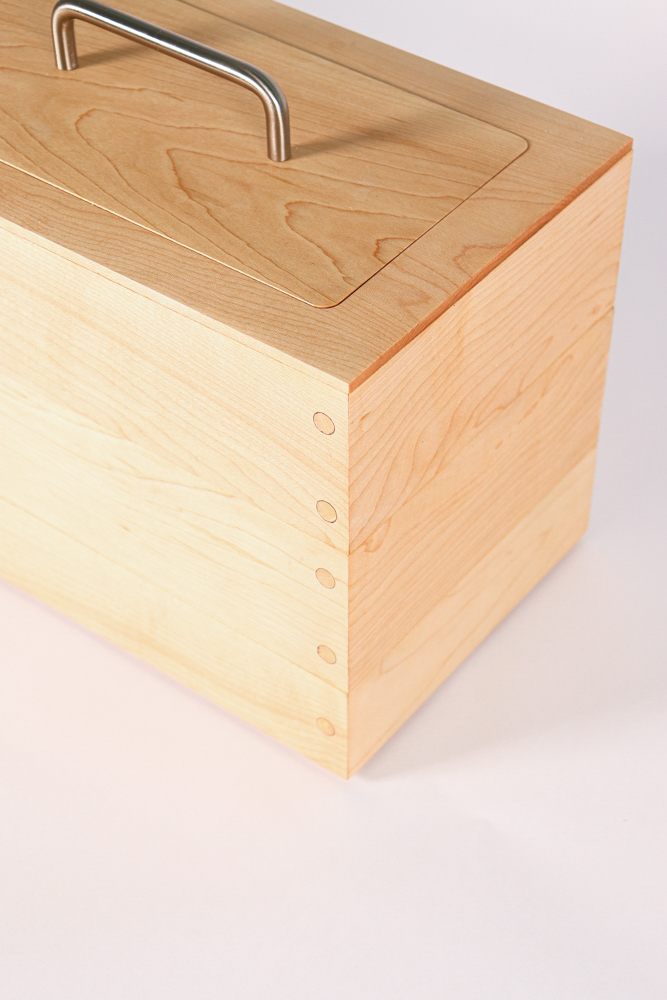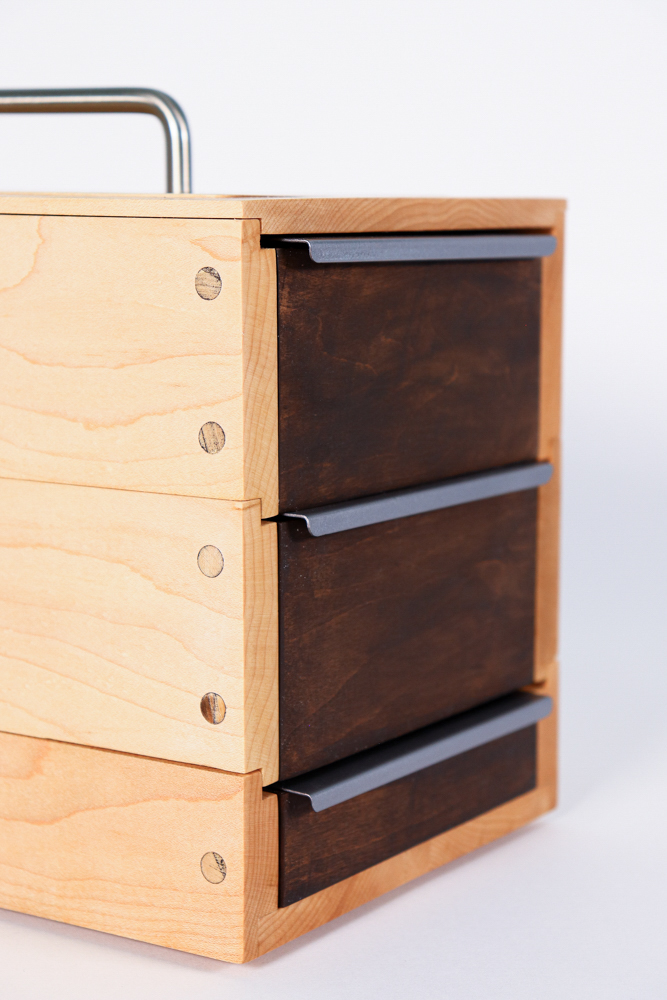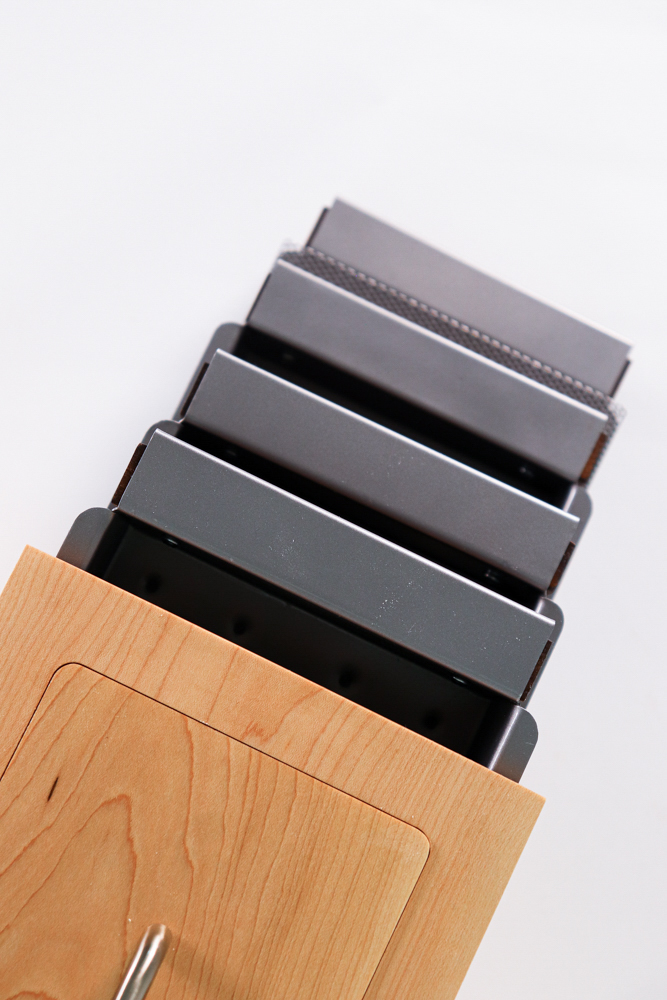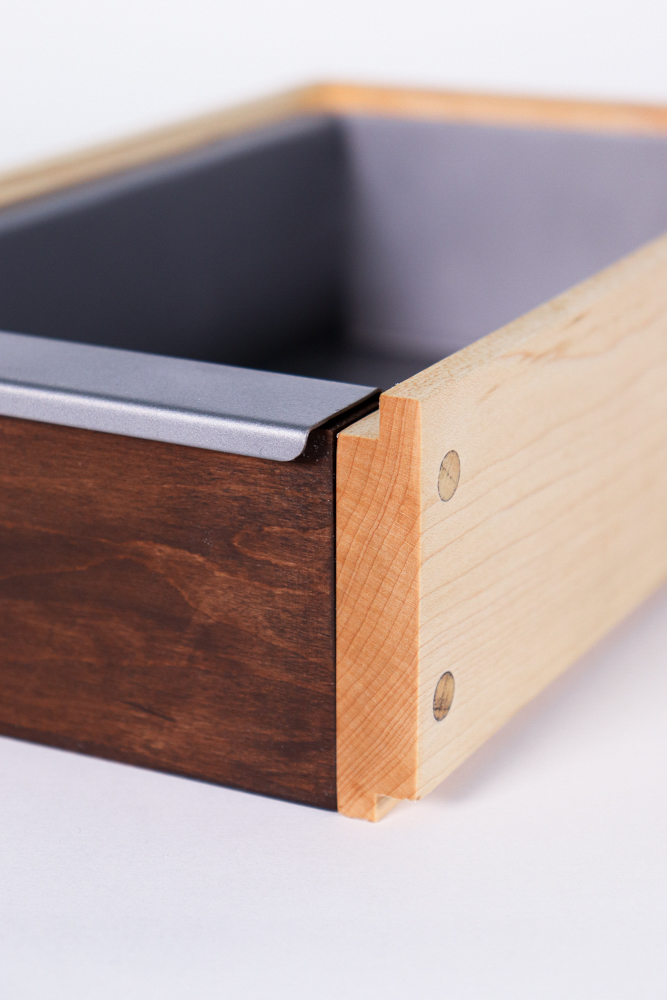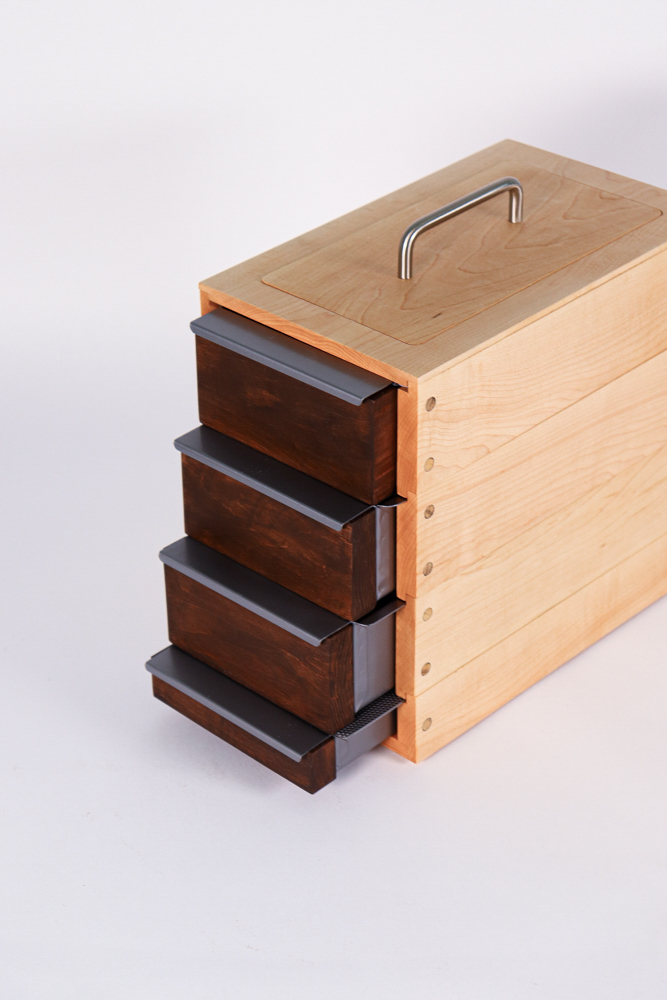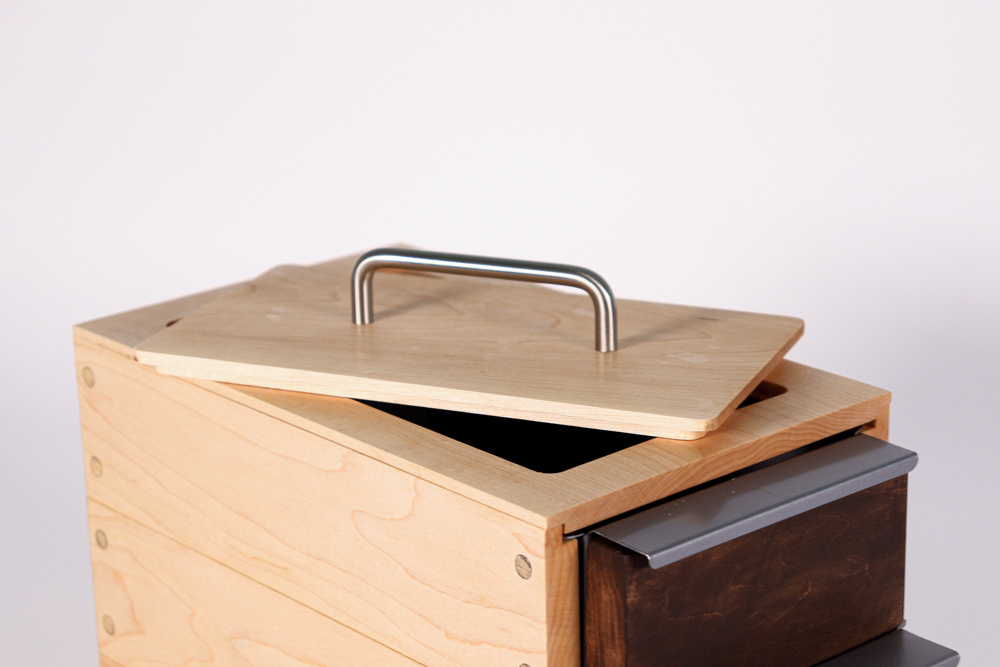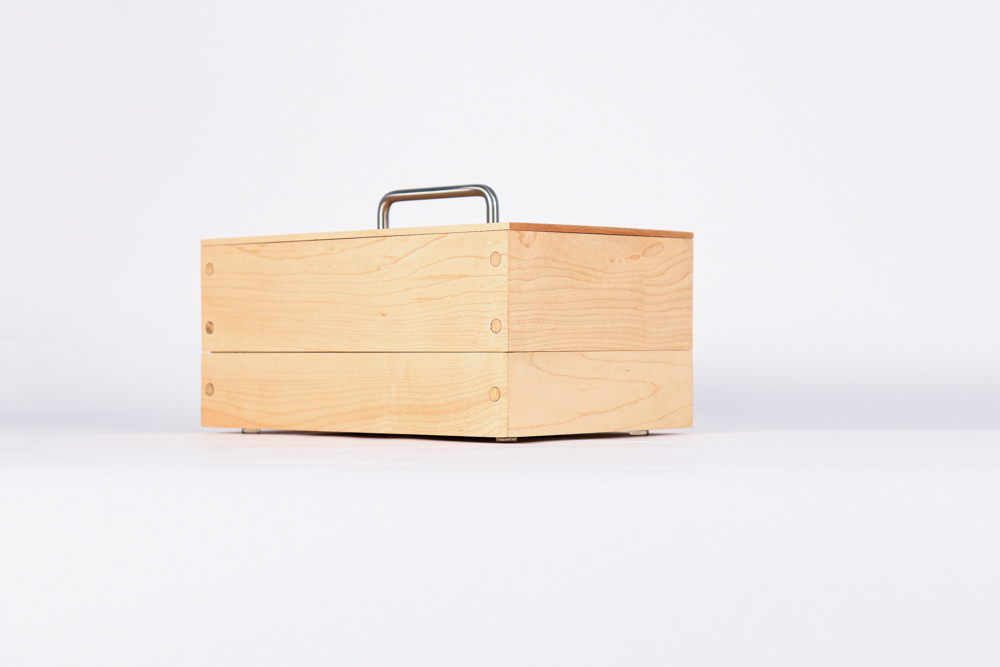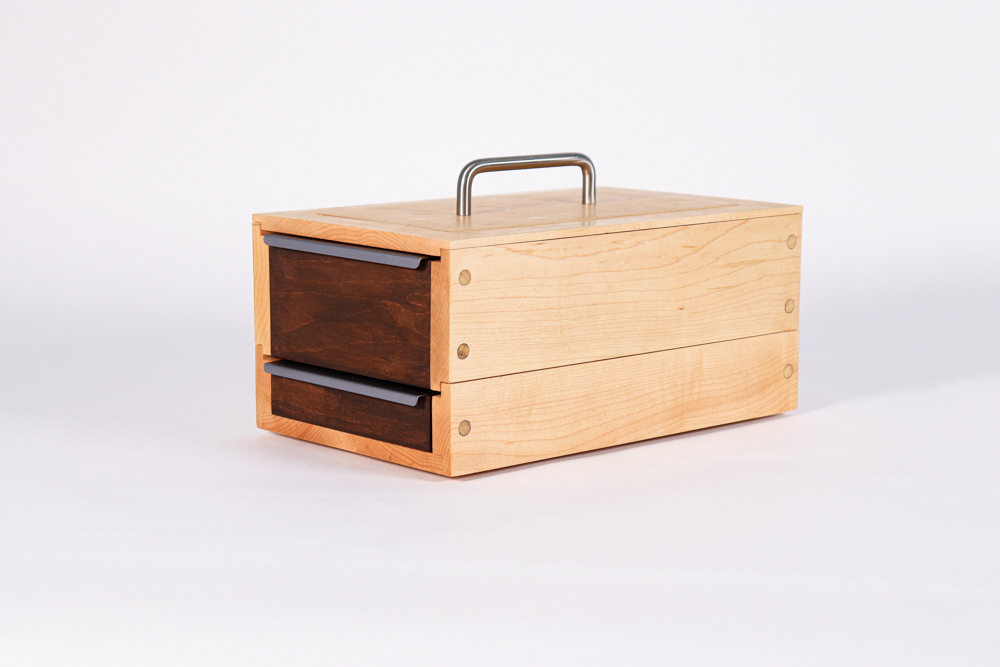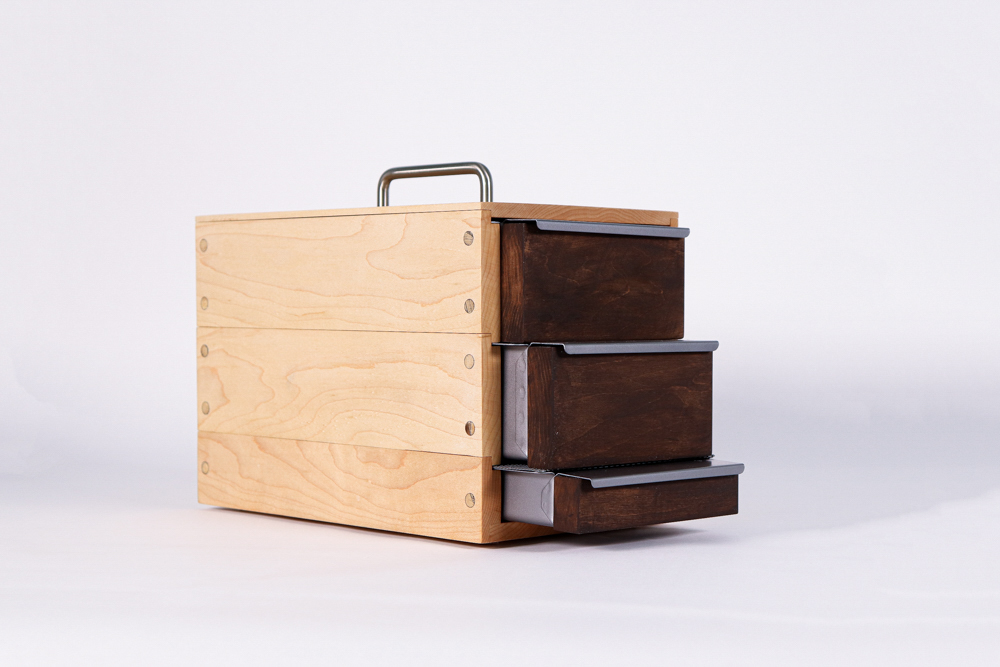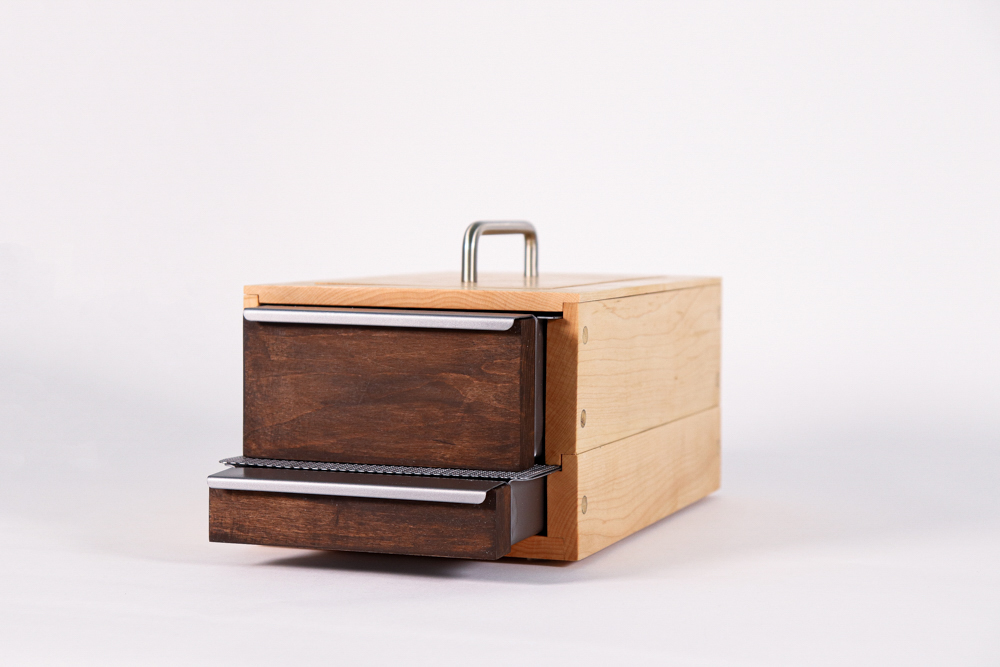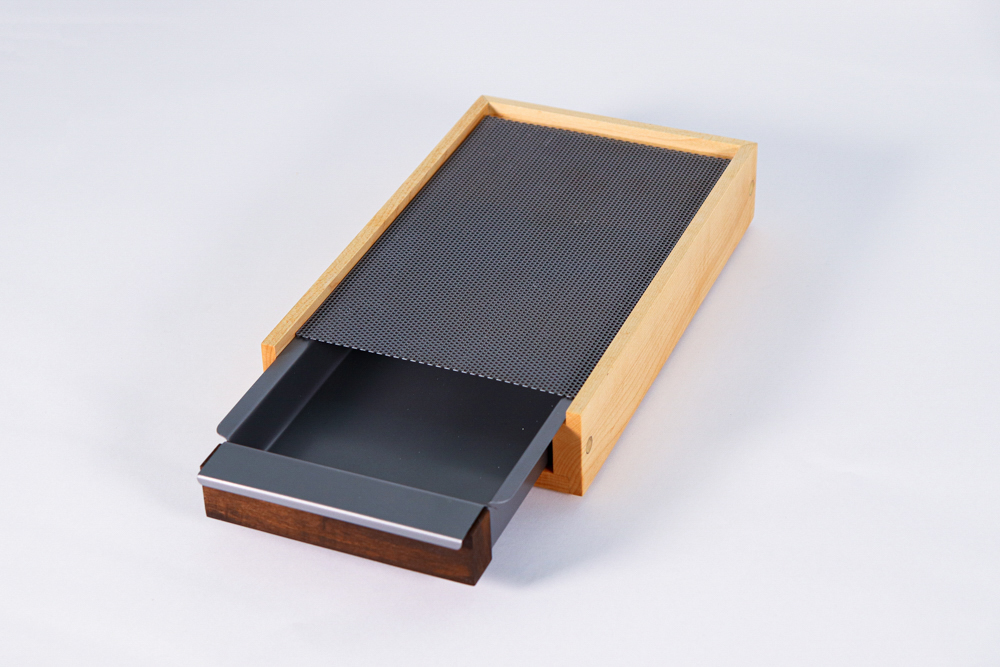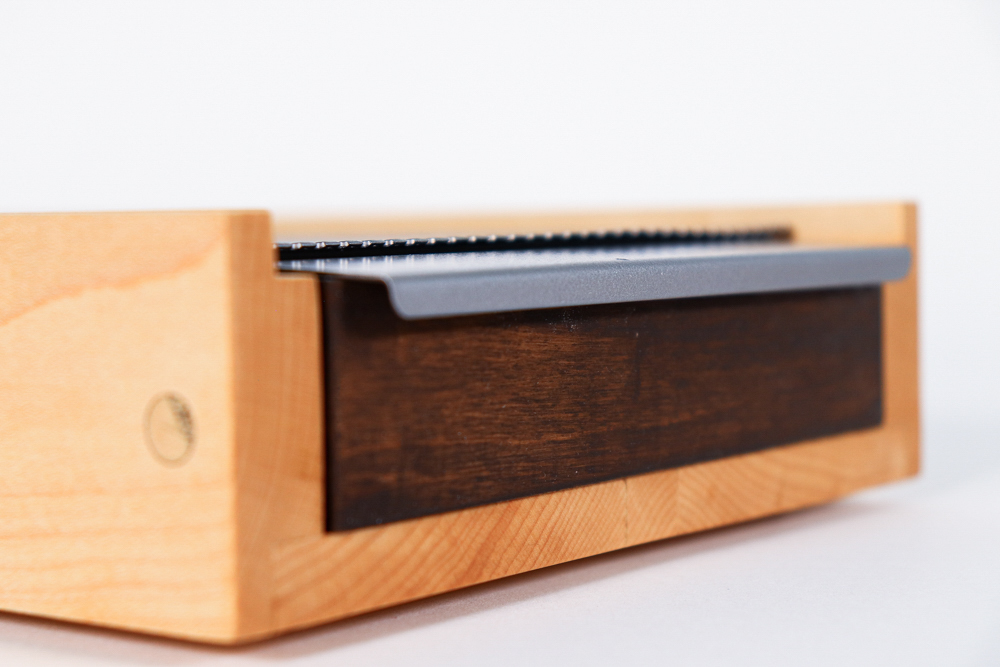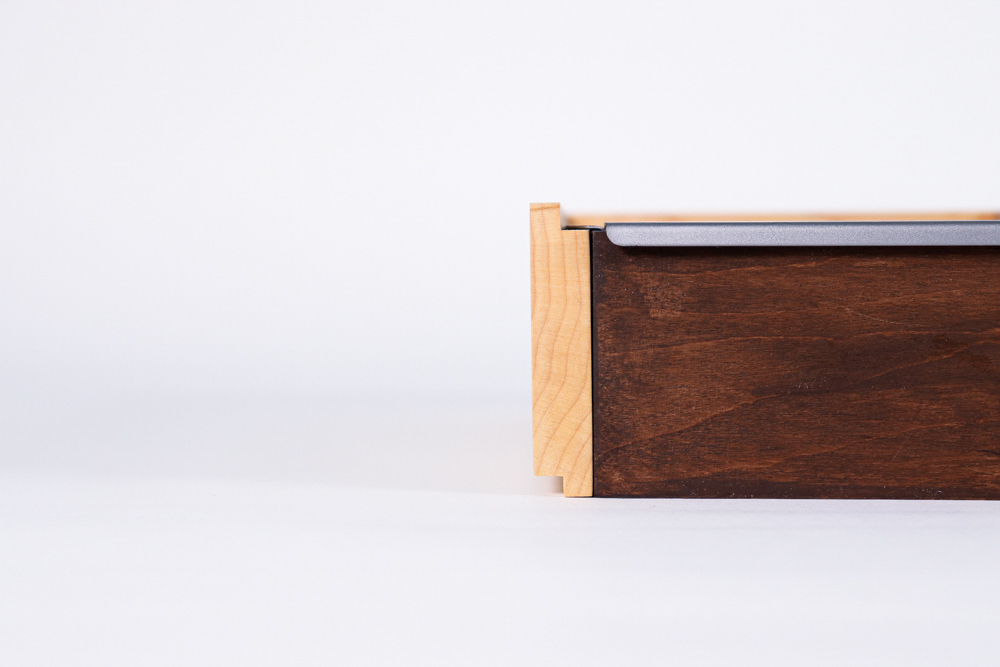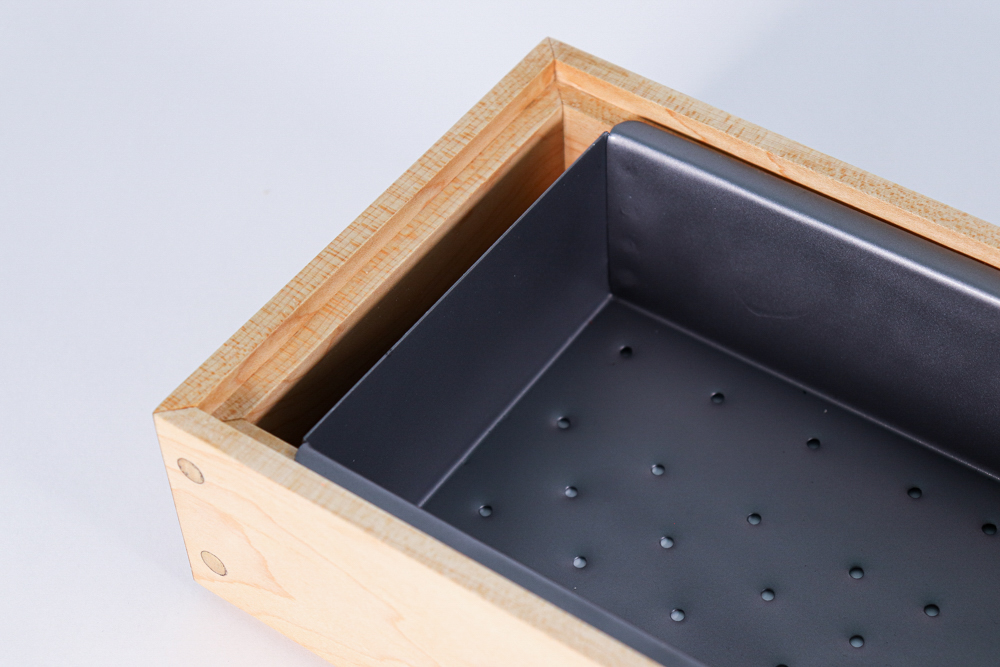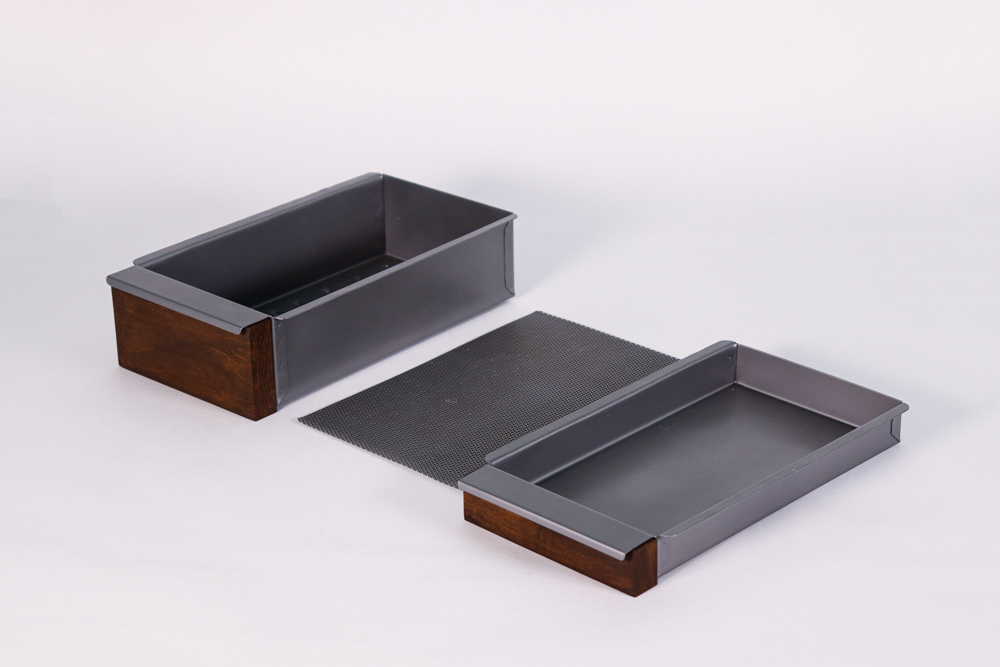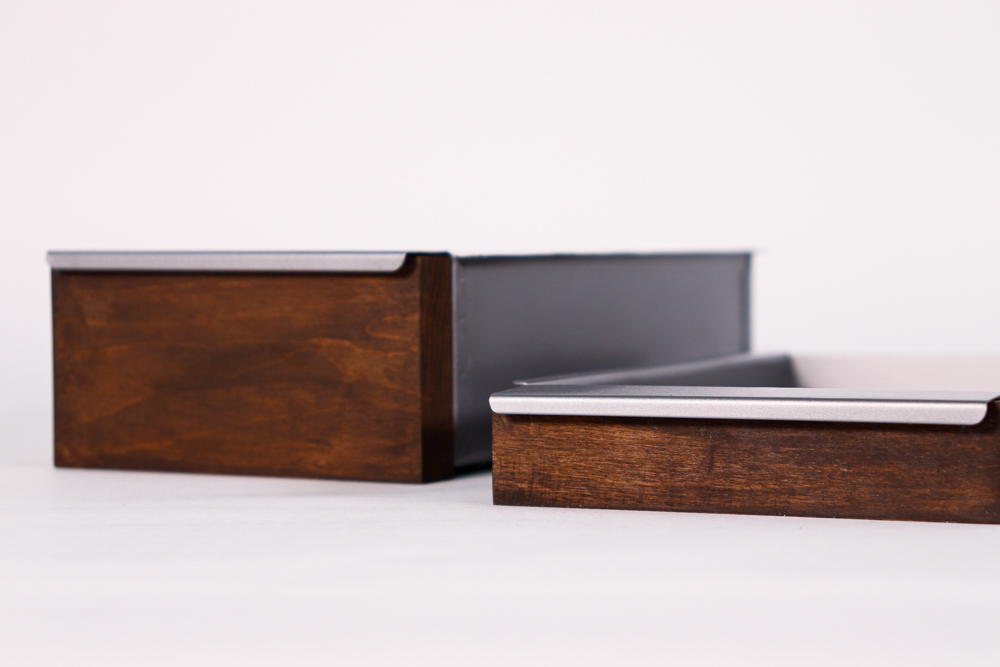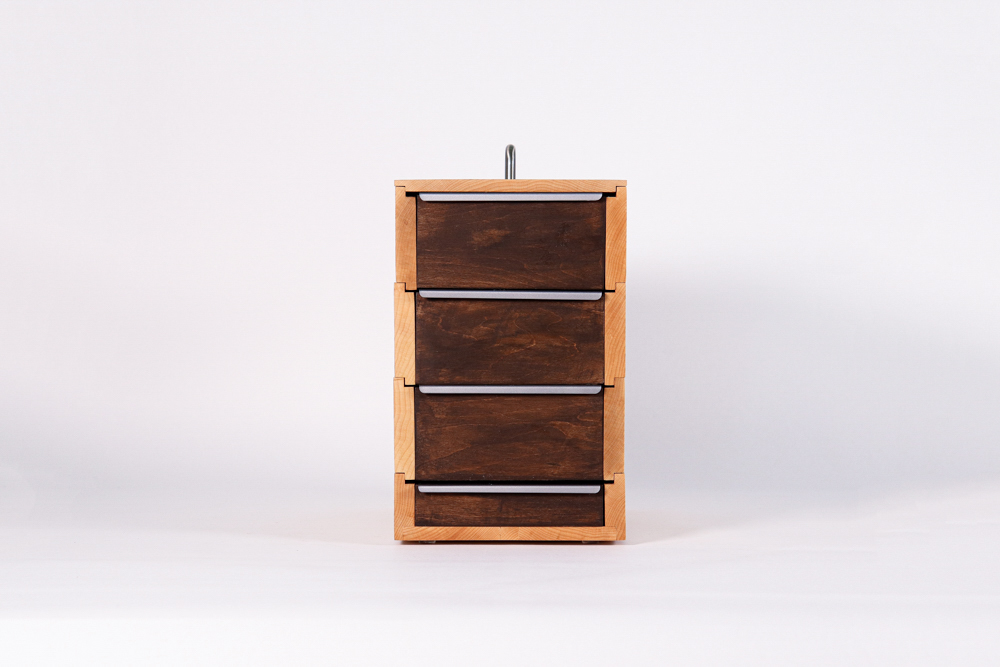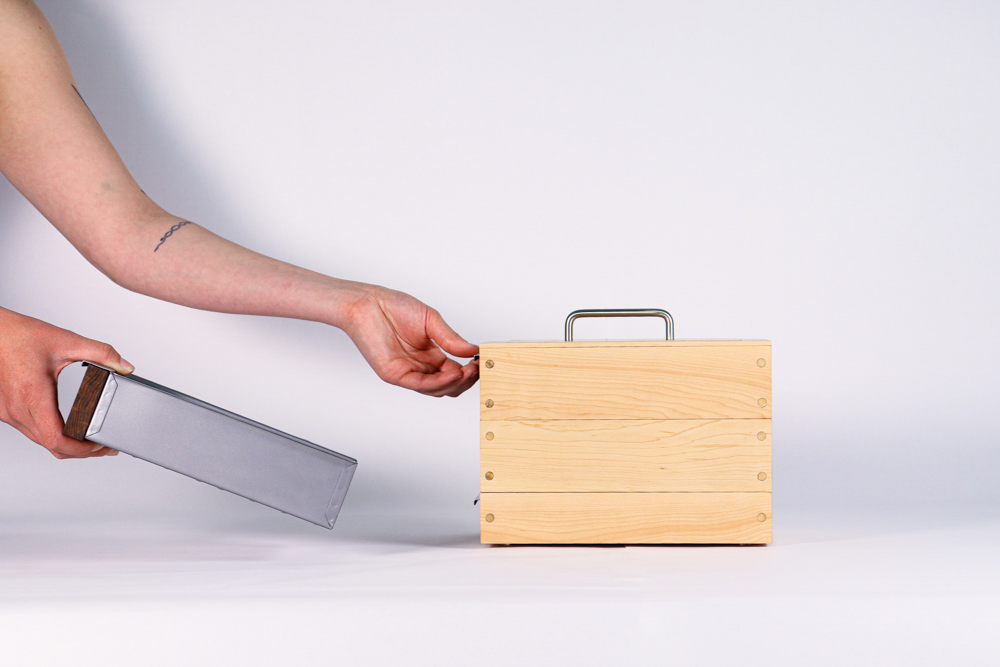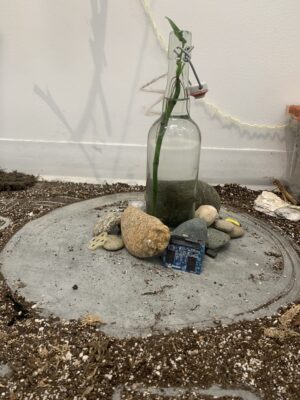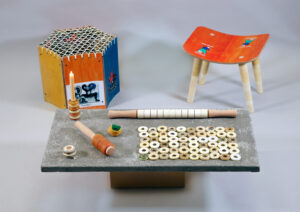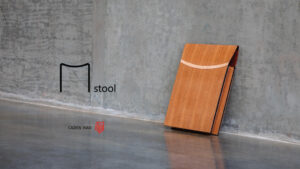Pulu
Elliot Zeller
See it On Campus: Level 2
Visitor InfoThe Pulu exhibit is located in Rennie Hall, room B2160
Award Recipient
The Wood Co-Op/Forestry Innovation Investment in Wood Design Industrial Design Graduation Award – Honourable Mention
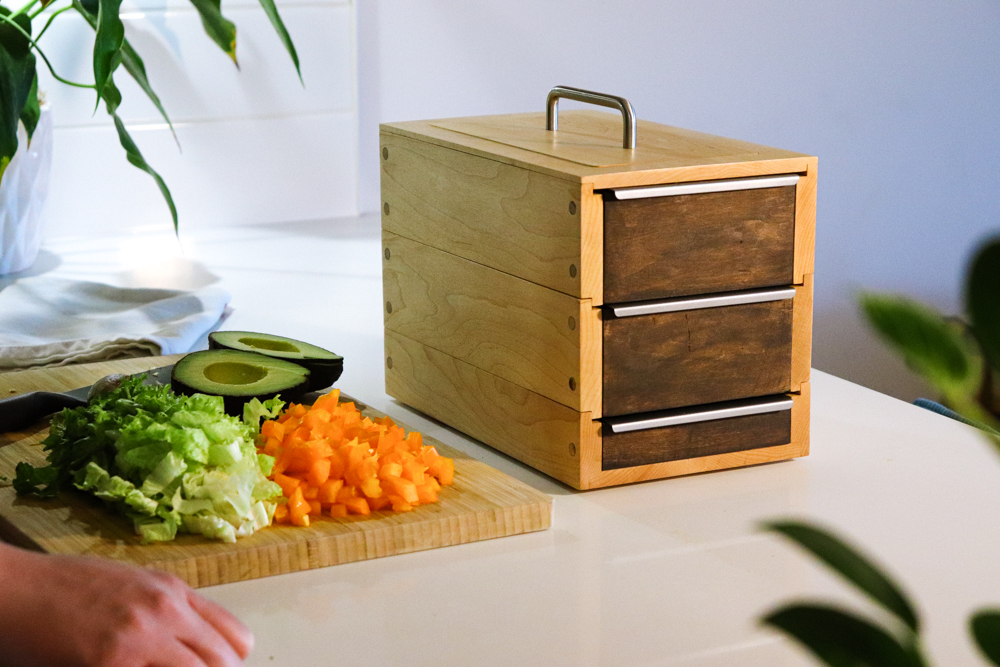
Pulu is a tabletop vermicomposter which streamlines the composting process to make it more accessible to individuals and families, especially in urban environments. Pulu not only solves the problem of accessibility in composters today, but makes them more attractive and suitable to urban living. By making composting easy and available for all, Pulu reduces food waste within urban environments, bypassing landfills and being directly used back in the home, from gardens to plant pots.
Process
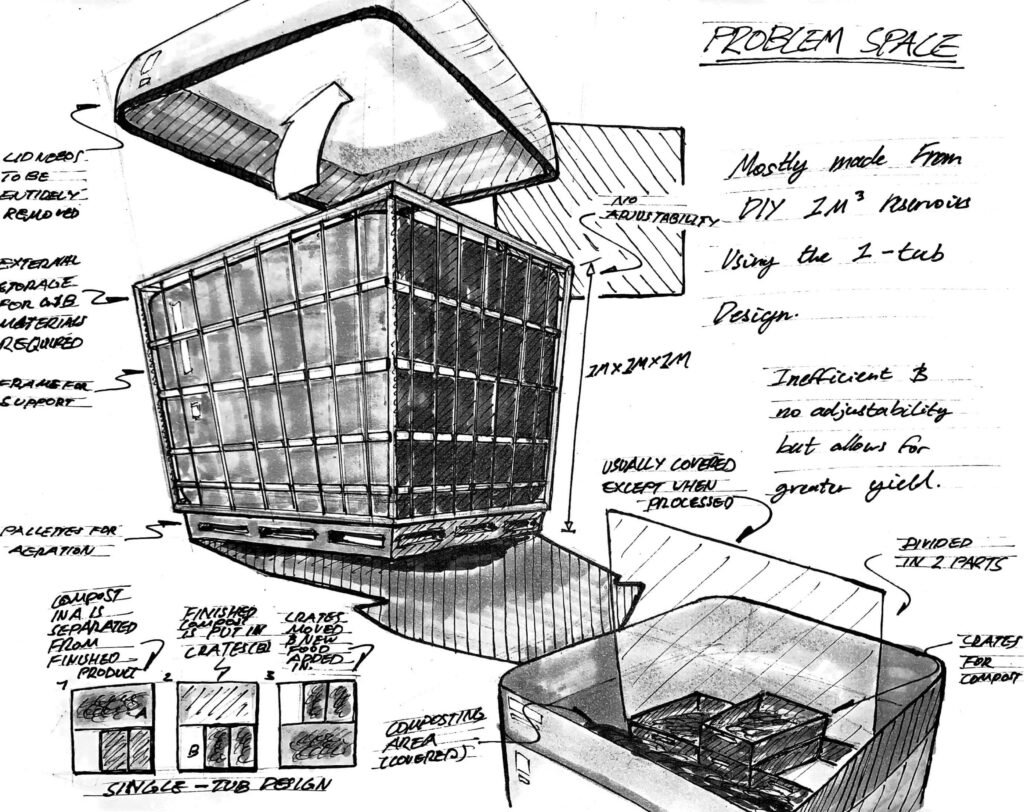
The initial research phase of the project introduced me to the concept of vermicomposting, which uses worms to break down food waste rather than traditional decomposition. Though this was done in many homes around the world, there was no community vermicomposter, meaning they had to rely on their own DIY solutions, which were unreliable and poorly functional.
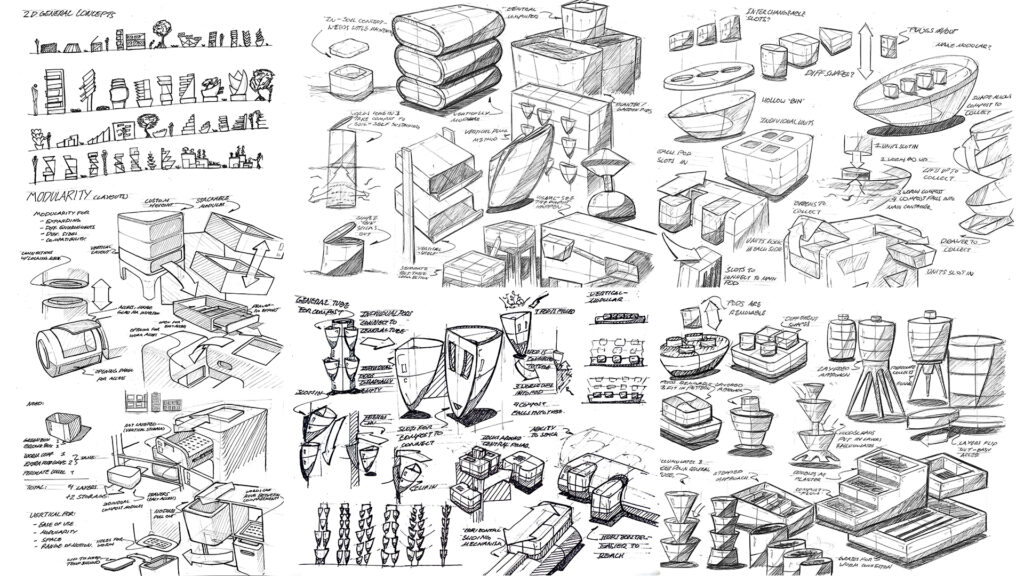
This was followed by small-scale models, used to test the functionality and usability of the composter within the home at a smaller scale. Through making and testing these models, I found another design opportunity: bringing vermicomposting within the home. Home composters make composting more accessible, but are usually tucked away and used as vessels before the food waste is brought outside to a larger composter. What if we skipped that step entirely and composted directly on the kitchen countertop?

These first models helped show which modifications were necessary. The main iterations of which were changes to the joint between the layer and the material of the drawer changing from wood to metal.
Several other tweaks were made, including a lid, and different layers and manufacturing techniques. These were included in the final prototype, which would directly influence the final model.
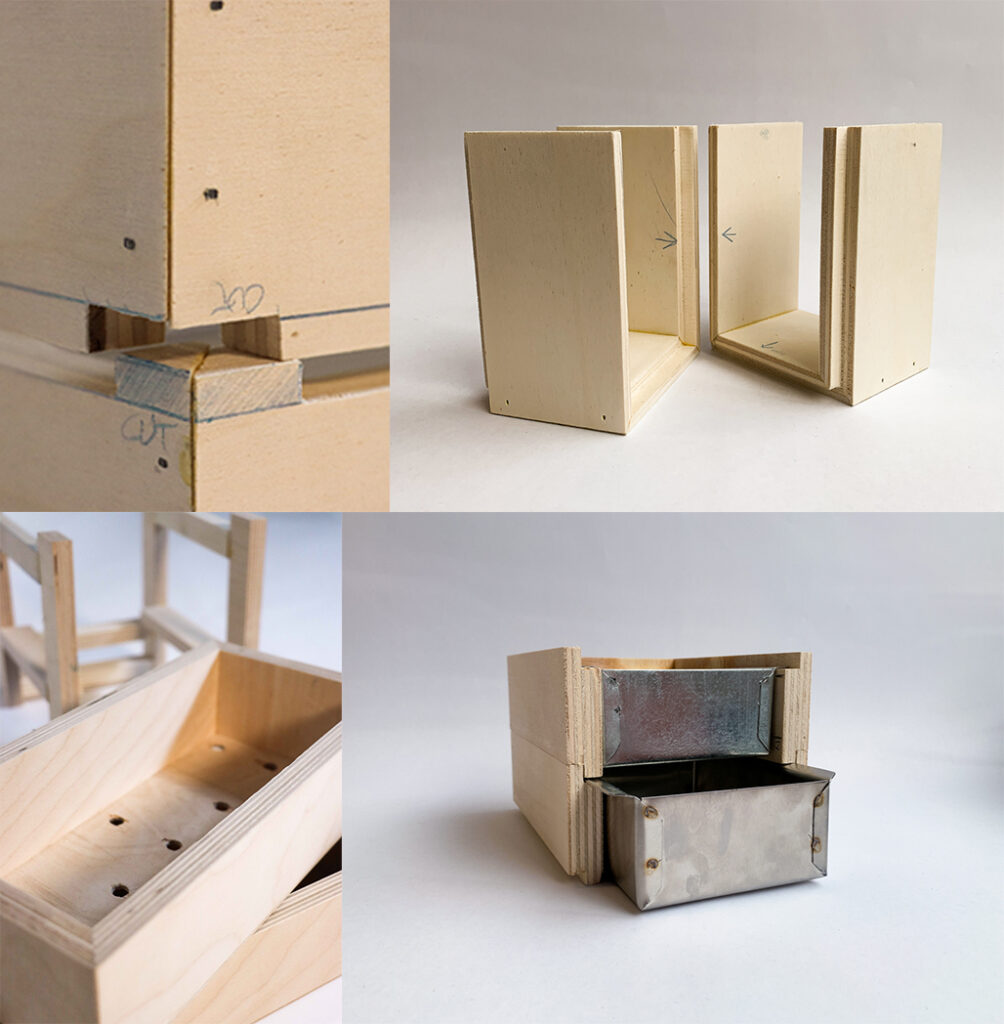
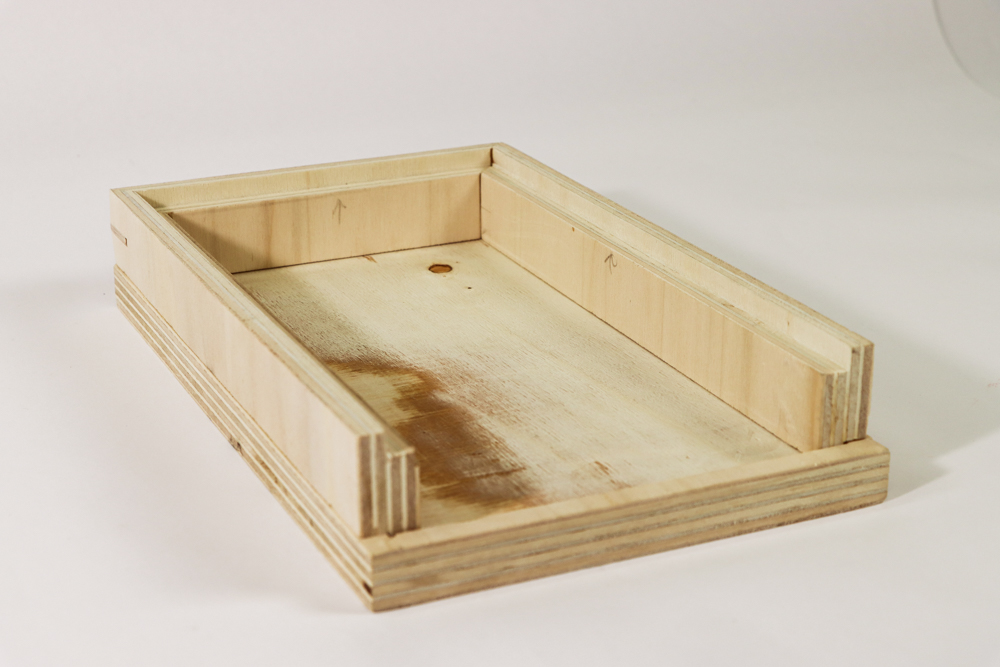
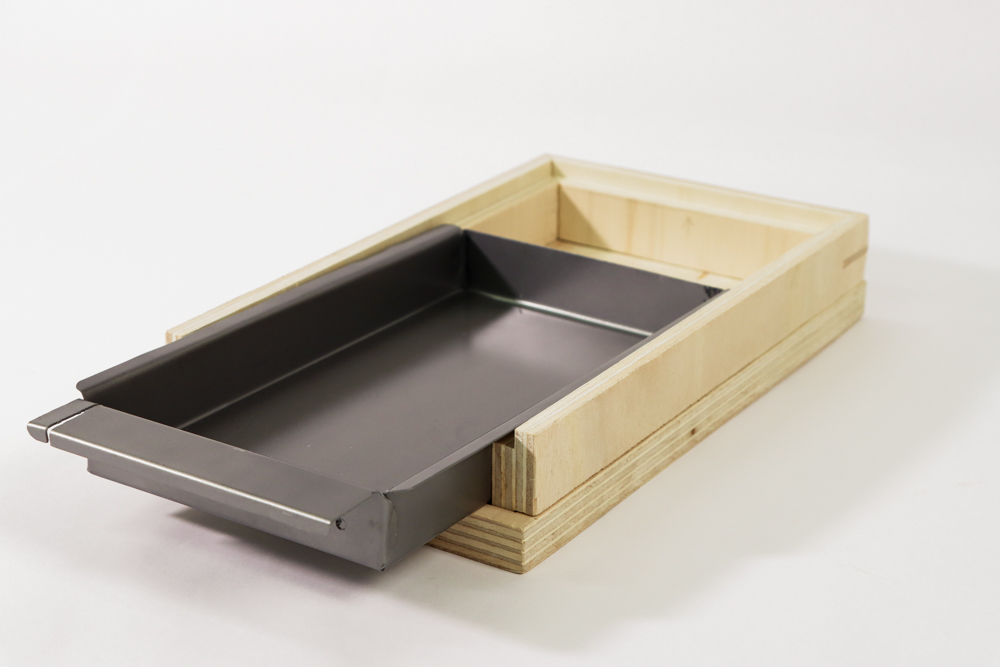
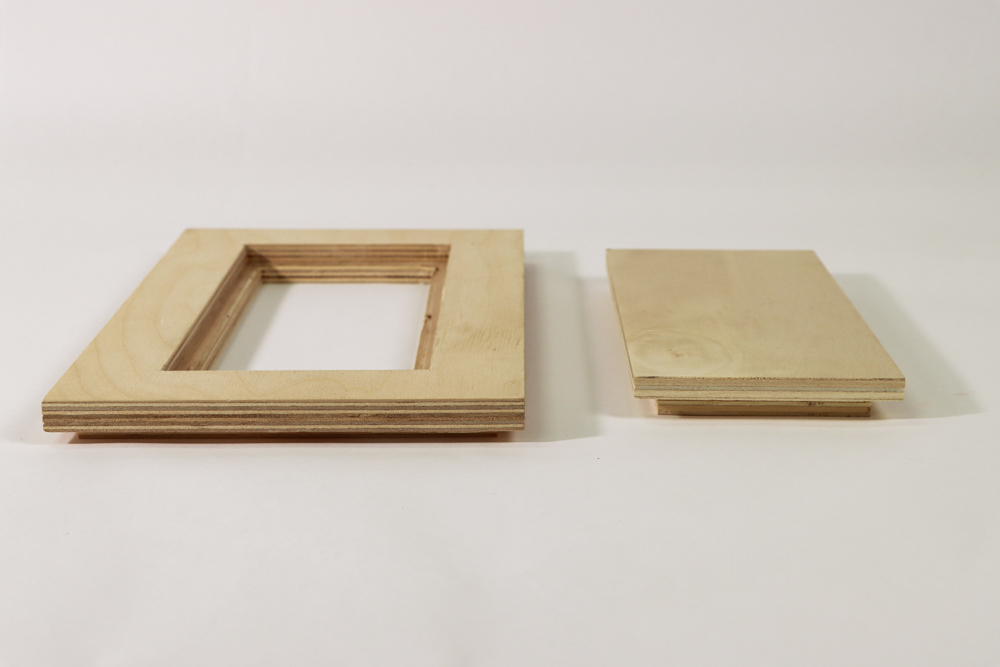
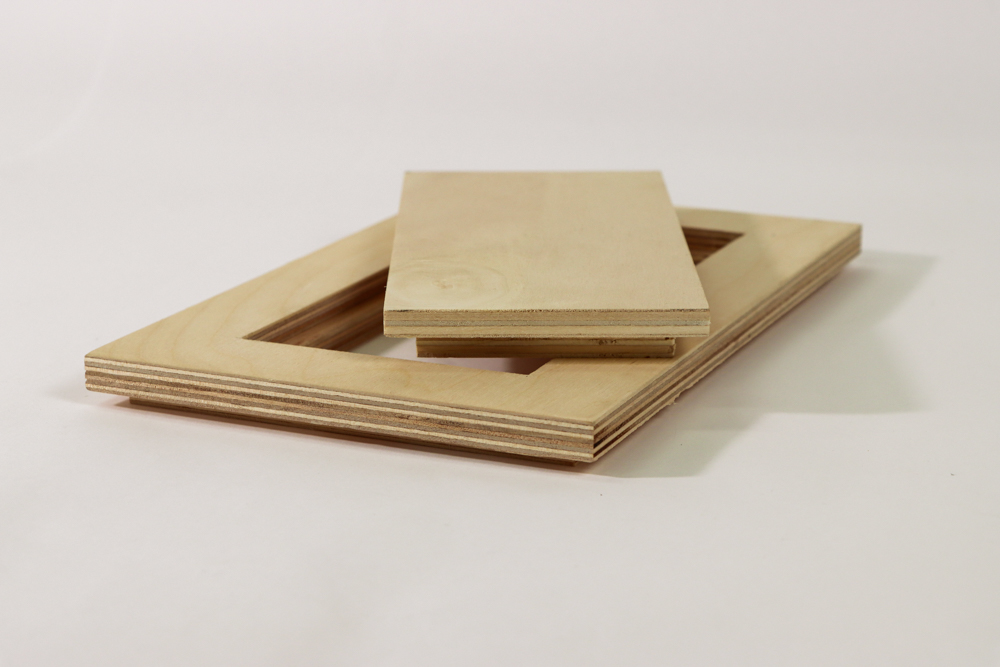
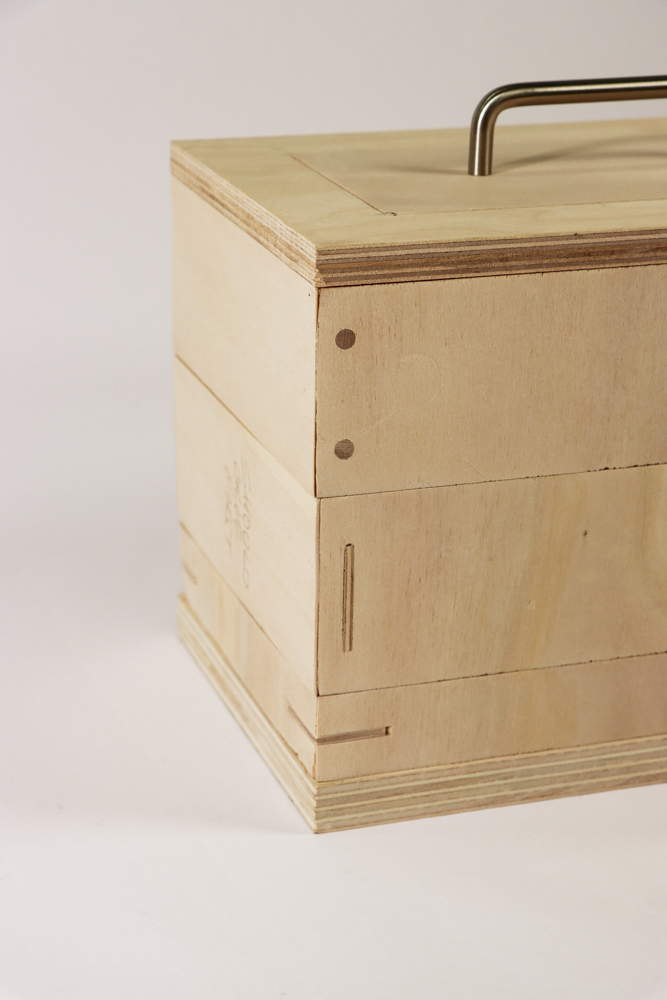
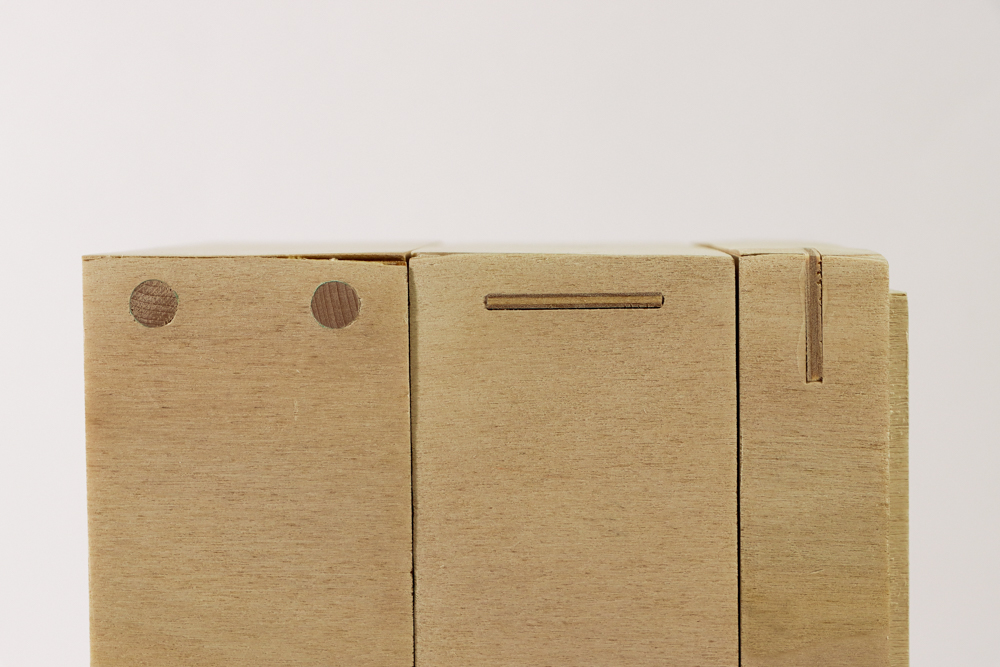
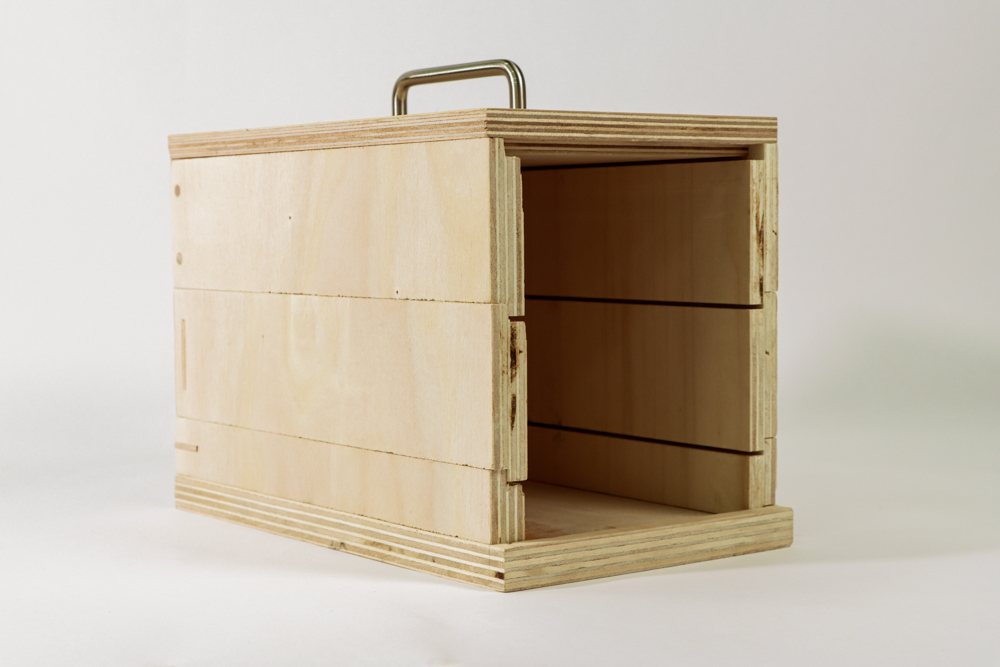
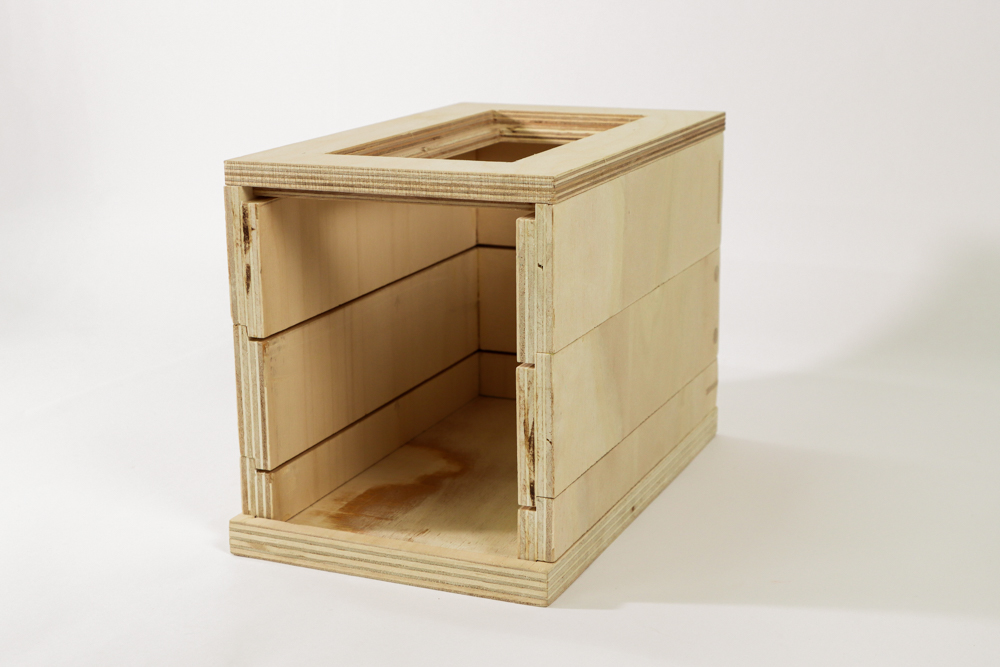
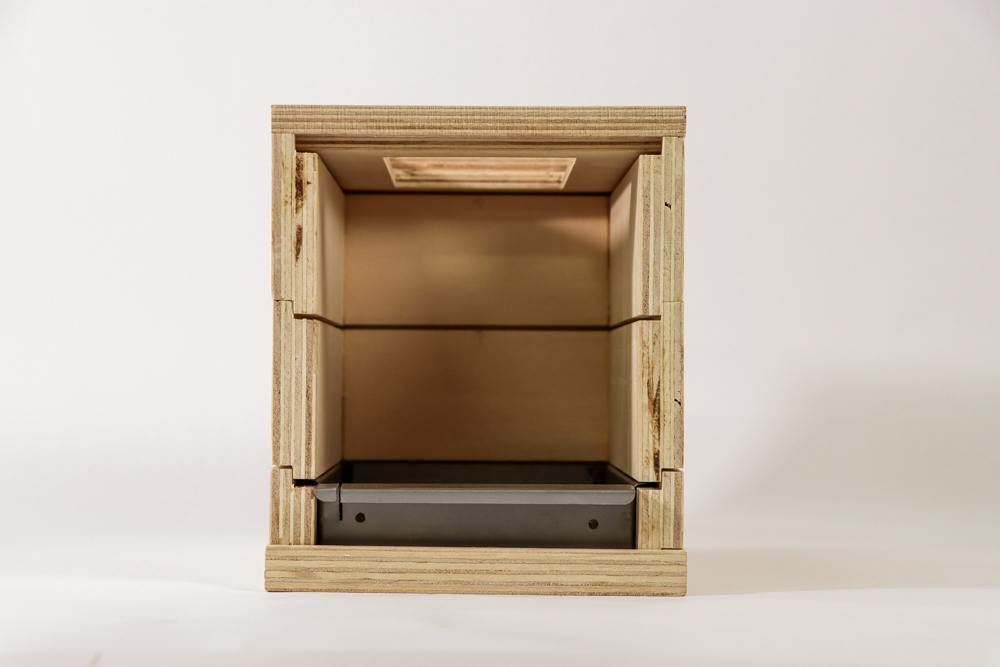
Pulu
Pulu is composed of two layers with a compost tea receptacle. If there is too much compost for the two layers, another can be added. Several layers can be included for larger families, or can be removed for individual households. The rule of thumb is one layer per person, though that can of course change. Pulu is made of maple and walnut, and the drawers themselves are made of clear-coated cold-rolled steel.
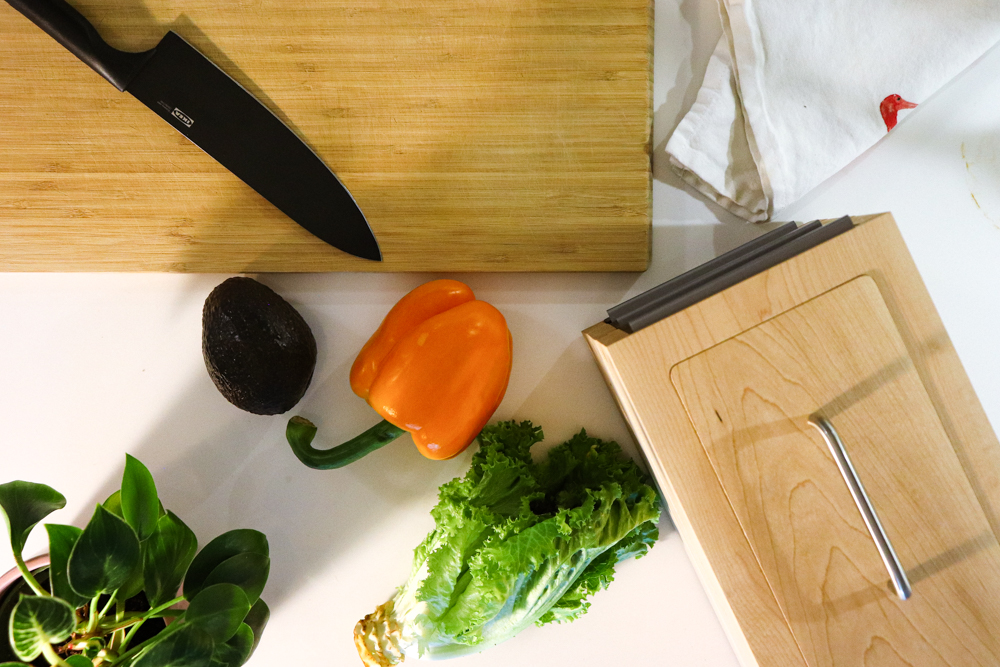
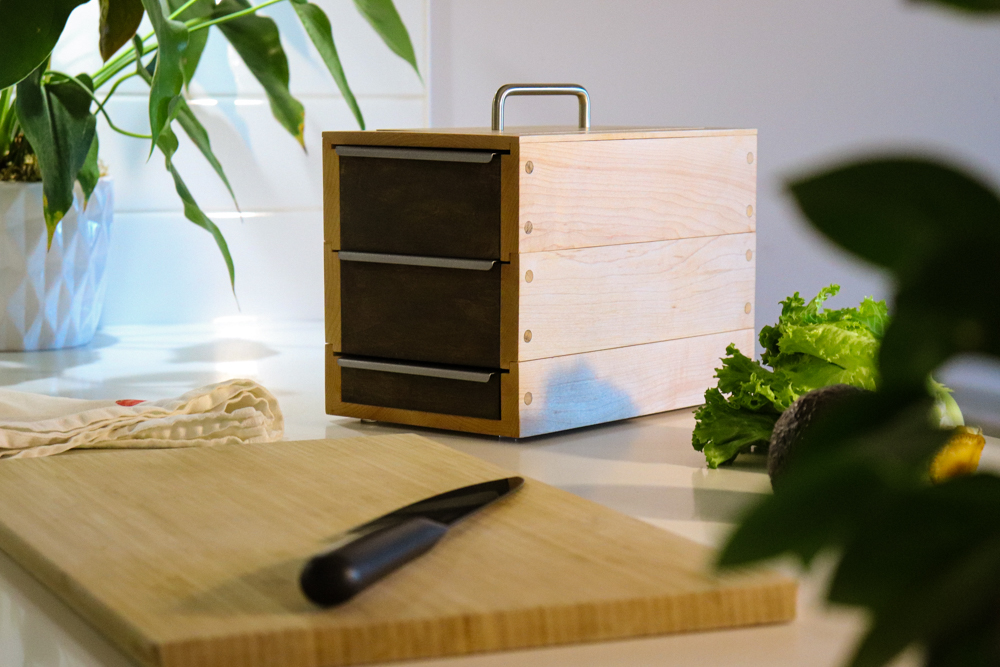

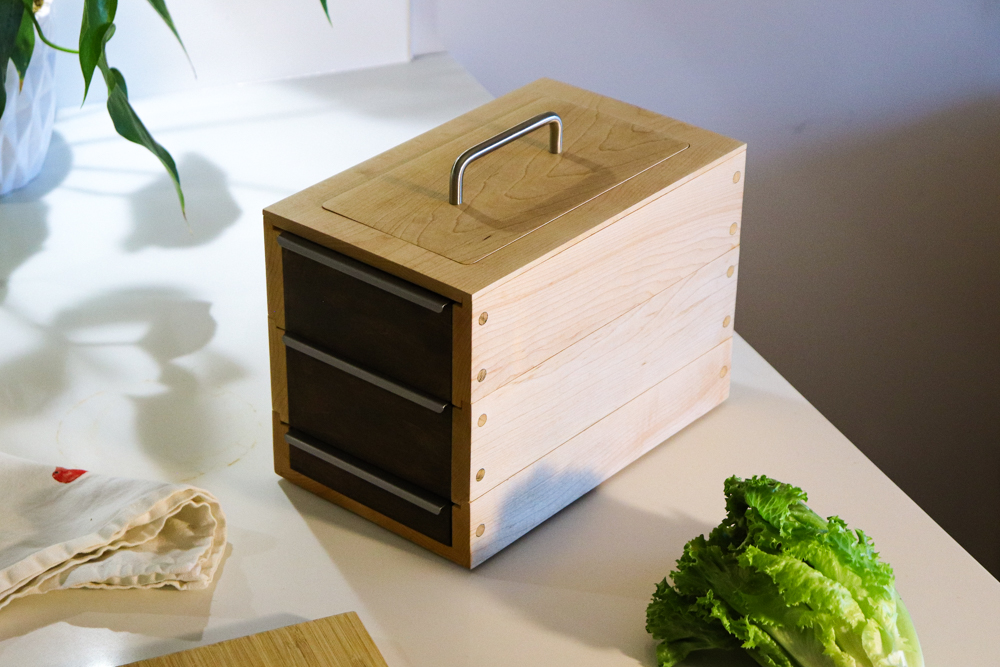
Steps
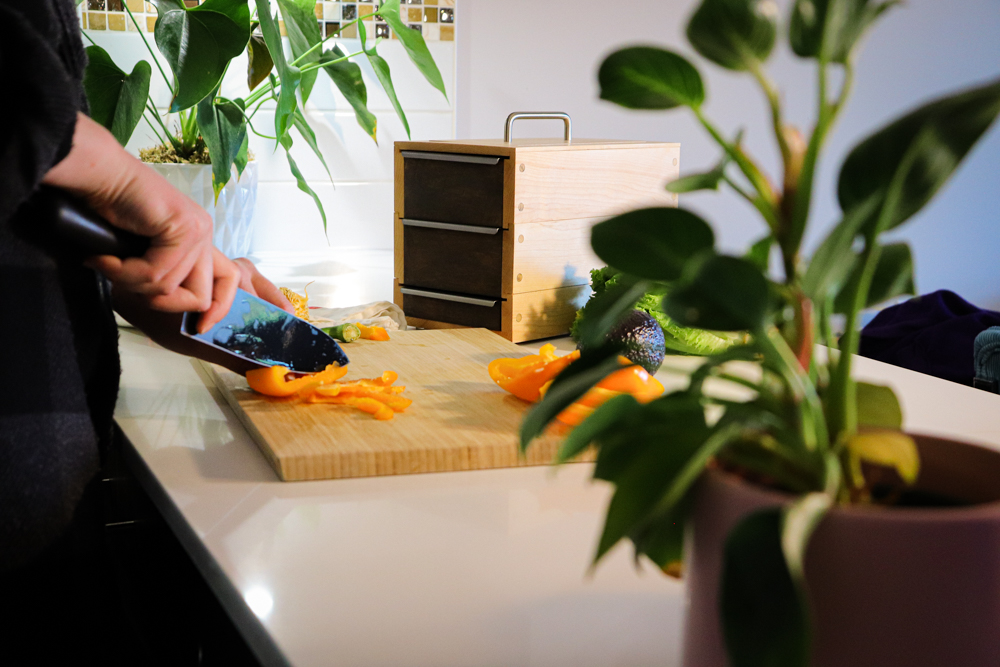
[ 1 ]
Chop food, separating discarded scraps.
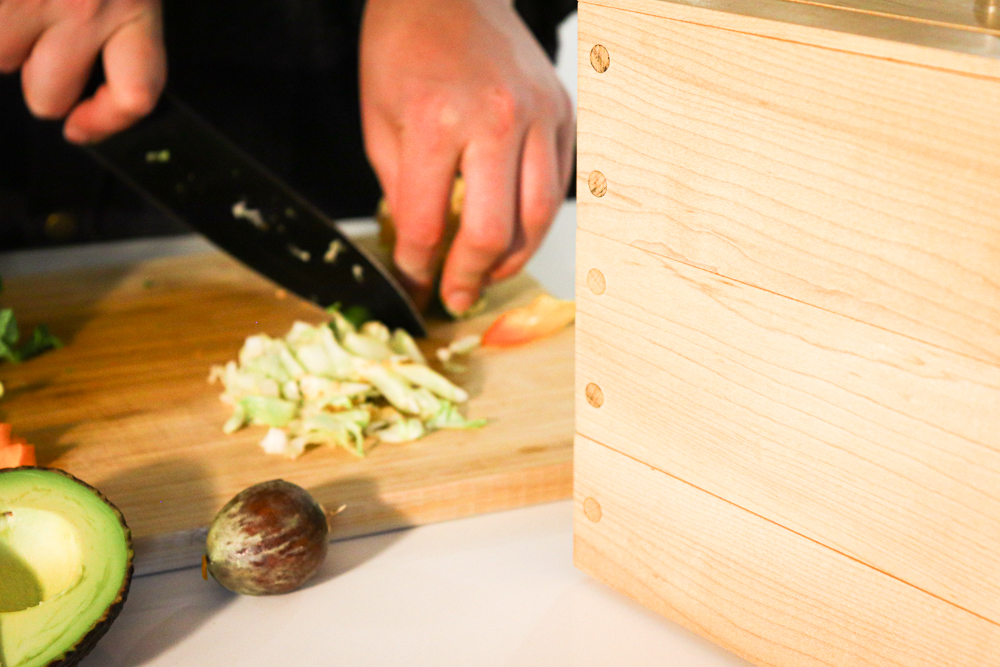
[ 2 ]
Roughly cut food scraps into manageable sizes.
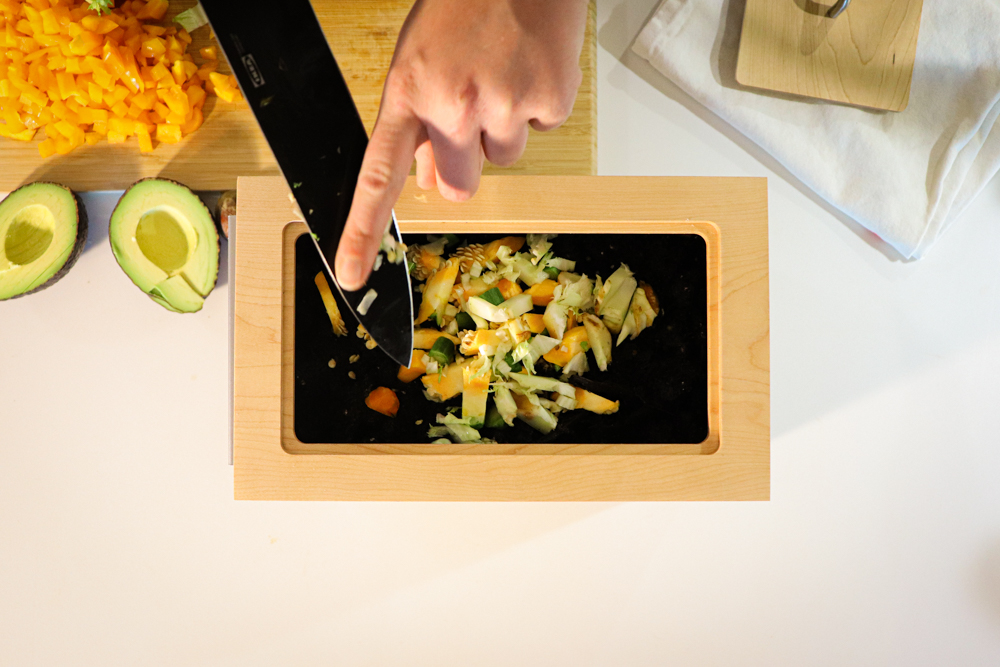
[ 3 ]
Put the scraps in the top of the composter.
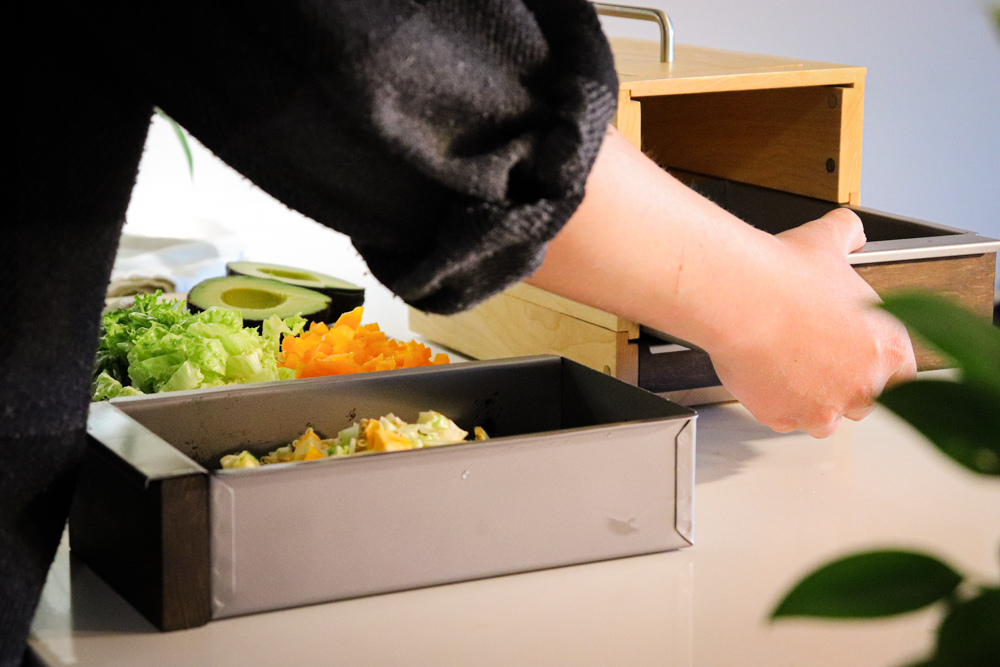
[ 4 ]
When the top drawer is full, swap with the bottom drawer.
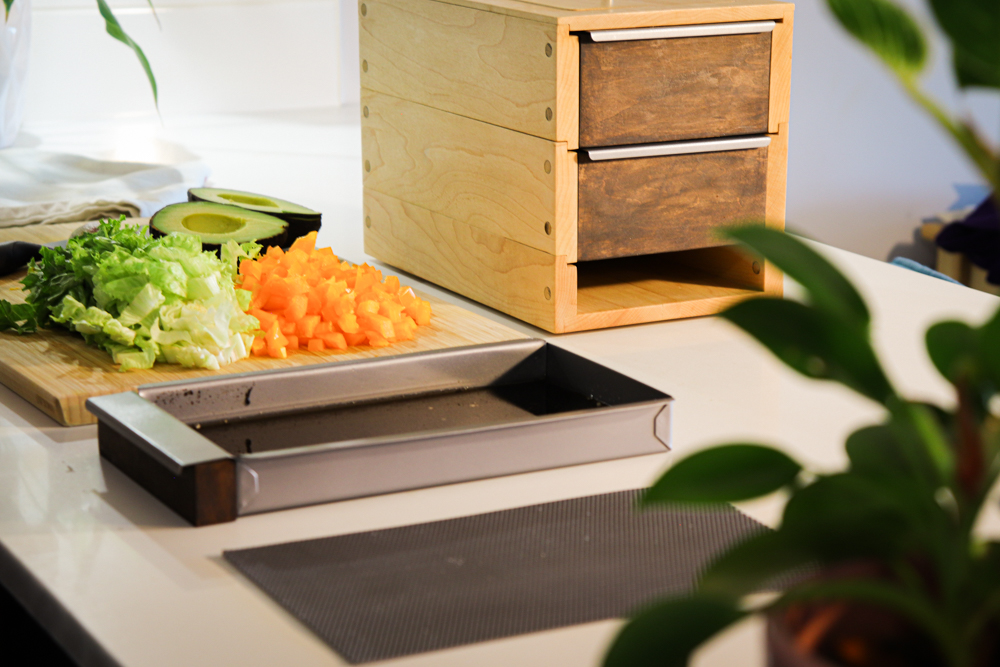
[ 5 ]
Compost tea will collect in the lowest tray.
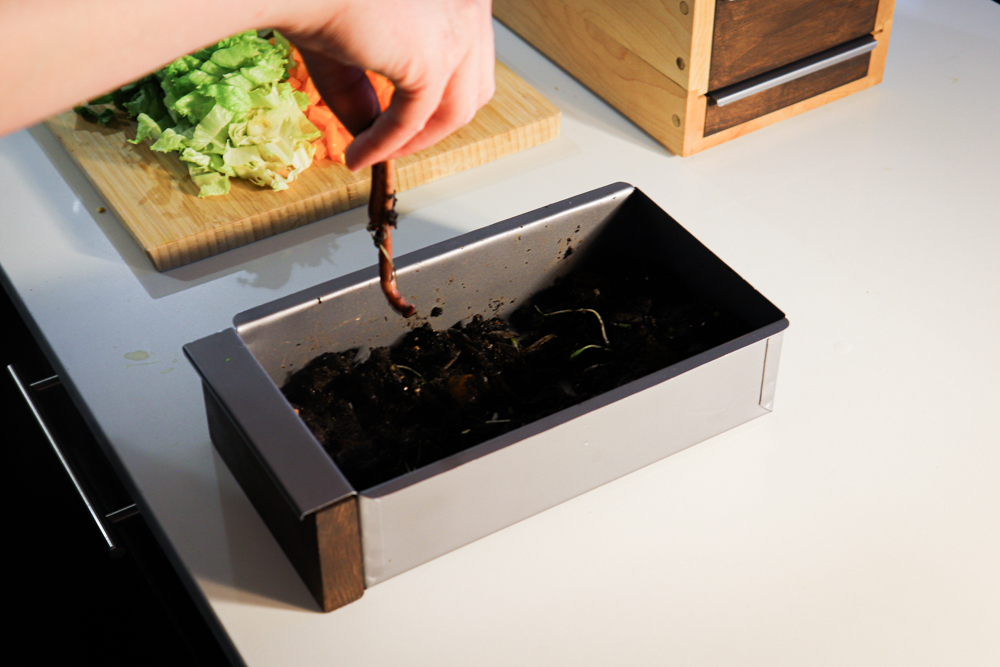
[ 6 ]
When the bottom drawer is full and the worms have been sorted out, it can be emptied and used as compost.
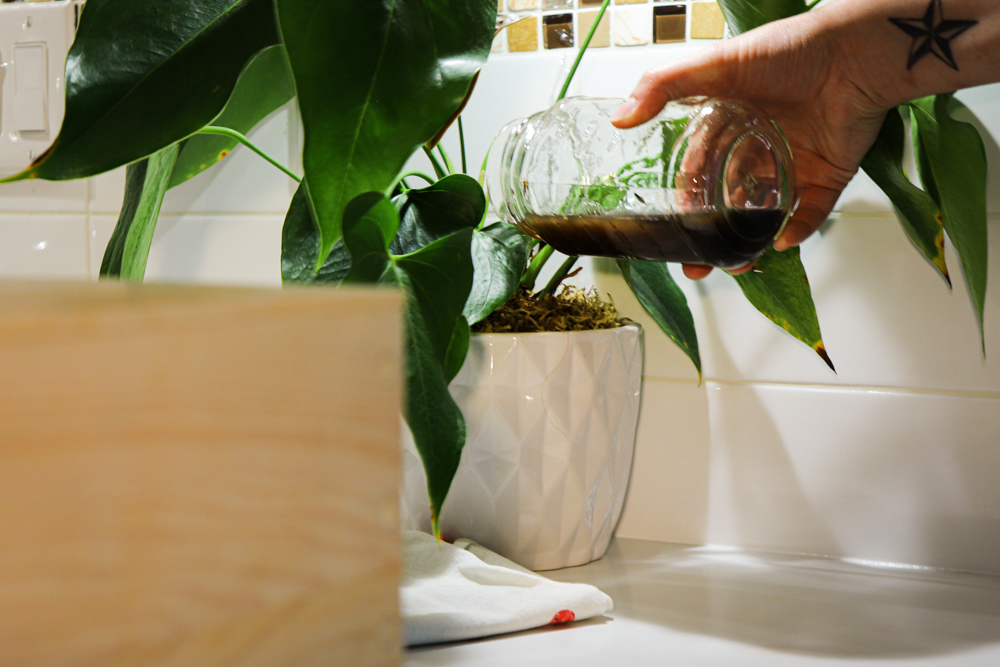
[ 7 ]
The compost tea from the lowest drawer can be used as a nutrient-rich fertiliser.
